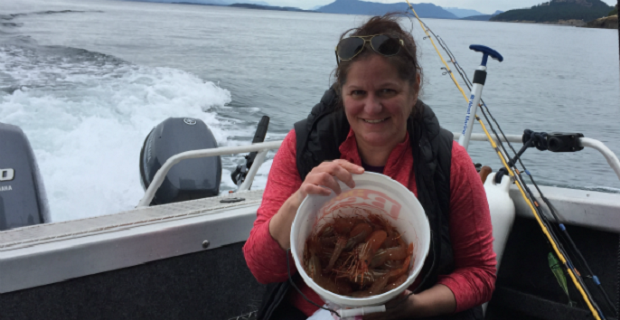I just spent the weekend with my family shrimping on Puget Sound. It was fantastic! We caught lots of shrimp to eat (yum!) and saw plenty of wildlife, including orcas. It was particularly special that I was able to share this with my family visiting from Florida.
I have lived in the Pacific Northwest over 20 years and I am still blown away when I see an orca breach. It’s also inevitable, given my line of work, that I think about the toxic soup of chemicals in Puget Sound that have helped hasten their population decline.
Many of the chemicals affecting these creatures and their food supply, like toxic flame retardants and phthalates, are the same ones affecting our own health. We’re in the same toxic boat as the fish, birds, plankton, and orcas when it comes to harmful chemicals.
Orcas don’t have flame retardant laden TVs or use personal care products containing phthalates, so how do these chemicals get into Puget Sound? It turns out that consumer products in our own homes are a source of these chemicals to the Sound and other water bodies.
We know this because of two groundbreaking studies conducted by TFF’s Science Director Erika Schreder. Her research has tracked how chemicals from consumer products escape the product, contaminate house dust, hitch a ride on our clothing, and get washed down the drain through laundry water to Puget Sound and the Columbia River.
Our successes in tackling harmful chemicals in consumer products, like the recent announcement by Costco that it is starting to test products for harmful chemicals, not only protects the health of our communities, but the health of our natural environment too. You can read about this work and send Costco a Thank You note.
Also, please join us and others June 28th in Tacoma for a discussion on “Our Toxic Orcas”. It’s part of June Orca Month activities!
Click here for more information and to buy tickets.





